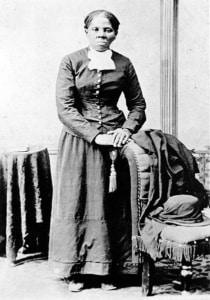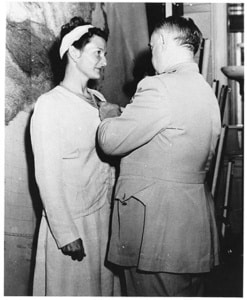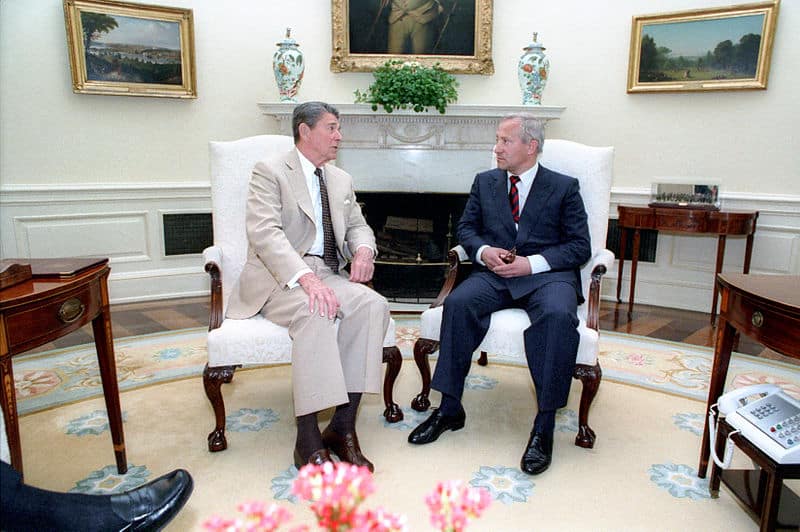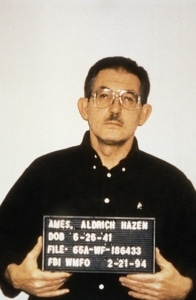DCPA NEWS CENTER
Enjoy the best stories and perspectives from the theatre world today.
Enjoy the best stories and perspectives from the theatre world today.
From the archives: this article was originally published on March 22, 2023
If you Google “international intelligence agencies,” Wikipedia gives you a list that’s almost too long to count. While the fictitious 007 — Bond, James Bond — works for the non-fictitious MI6, the United Kingdom is far from the only country to have intelligence agencies. The United States lists seven agencies and 25 departments including the CIA, FBI, and Office of Homeland Security. For nearly 40 years, Russia had the KGB, Hitler had the Duquesne Spy Ring, and even always-neutral Switzerland operated the Lucy Spy Ring in World War II.
In fact, espionage goes back as far as (if not before) c. 1360-1332 BC. According to the International Spy Museum, the Amarna Letters are a series of diplomatic correspondence between Egypt and its representatives in Canaan and Amurru that discuss intelligence and espionage among other cultural and political insights.
It’s little wonder that leaders have used spies and intelligencing to further their pursuits. While President George Washington was not a spy himself, he is considered America’s first Spymaster who understood how to leverage intelligence to gain advantage in the Revolutionary War.
Unlike England’s Queen Elizabeth I, who publicly named her Spymaster Francis Walsingham in the late 1500s, George Washington operated in secret. He formed the Culper Spy Ring in 1778 to obtain secrets about the British plan, strategy, and objectives. The work of the Culper Ring was not revealed until 1929 when correspondence was discovered. Of many useful missions, this group of patriots initiated a disinformation campaign that deliberately misled the British into protecting New York from a supposed attack, allowing the French allies to safely land and serve to reinforce the rag-tag revolutionaries.
Over the years, countries, causes, and individuals have enlisted spies to obtain information, undermine opponents and work to their advantage. Here are some of history’s most famous…and infamous…spy rings and agents.
HARRIET TUBMAN: Spy for the Union Army

Harriet Tubman. Photograph by H.B. Lindsley
While Harriet Tubman may be best remembered for helping dozens of enslaved people flee north along the Underground Railroad, her in-depth knowledge of the network gave her valuable insight into the towns and transportation routes throughout the South. The Union Army enlisted her services as a spy and scout. Undercover as an aging woman, she would observe and listen to soldiers and the enslaved population to glean intelligence about Confederate troop placements and supply lines. She was awarded $20 in 1899 (valued at nearly $730 today) for her service to the Union Army. Upon her death in 1913, she was buried with military honors at Fort Hill Cemetery in Auburn, New York.
THE CAMBRIDGE 5: Spy Ring for the Soviet Union
The Cambridge 5 were individuals working in the United Kingdom on behalf of the Soviet Union during World War II. The five known members remained active from the end of WWII through the beginning of the Cold War. The group was so named because they were all recruited while students at the University of Cambridge. Upon graduation, each worked in various government offices and had access to highly classified information. The five were staunch followers of the Marxism-Leninism of Soviet Communism, which they believed to be the best defense against the rise of fascism. The known members were Donald Maclean, Guy Burgess, Harole “Kim” Philby, Anthony Blunt and John Cairncross. When two of the five suddenly fled to the Soviet Union, British suspicions were heightened, though none of The Cambridge 5 were ever prosecuted.
VIRGINIA HALL: Spy for Britain and the U.S.

Virginia Hall (left)
How does an amputee outrun the infamous Klaus Barbie (aka “the Butcher of Lyon”) and head of the Gestapo? Determination. America’s Virginia Hall, known as “The Limping Lady” to the Germans, was “the most highly decorated female civilian during World War II,” said Janelle Neises, Deputy Director of the CIA Museum during a 2019 interview with National Public Radio. Born into a wealthy Baltimore family, Hall shunned convention and set off to study in France. Despite being turned down for a position in the State Department and a leg amputation following a shooting accident, she was put in touch with British intelligence through a chance encounter with a spy. Posing as a reporter for the New York Post, she returned to France where she gleaned information from French prostitutes and organized French resistance fighters. Soon, the Gestapo was in hot pursuit, causing her to flee on foot on a three-day trek across the Pyrenees in winter. Ultimately, the British government felt it too dangerous to send her back to France, so she returned to America which, in turn, sent her undercover to France. A master of disguise, she ultimately contributed to airdrops for resistance fighters, reclaimed villages, and aided the Allied troops advancement into France. Following the war, she returned to the US and worked for the CIA for another 15 years before retiring in 1966 at the age of 60.
WALKER SPY RING: Spy Ring for the Soviet Union
The Walker Spy Ring operated in the U.S. for nearly 20 years when John A. Walker Jr., a former Navy communications specialist, masterminded the biggest leak of classified Navy documents in history. In pursuit of a big payoff and unhampered by conscience, Walker enlisted his brother Art, son Michael, and friend Jerry Whitworth to sell military secrets to the Soviets in the 1960’s through the 80’s. Ultimately, his alcoholic, resentful ex-wife tipped off the FBI. After building a case for nearly four months, more than 85 agents tailed Walker from Florida to a dead drop in Maryland where they obtained more than 129 classified documents. All four individuals served time; John and his brother Art received life sentences and both died in 2014, Whitworth was sentenced to 365 years, and son Michael was released in 2000 after 15 years.
OLEG GORDIEVSKY: Spy for Britain

President Ronald Reagan and Oleg Gordievsky in 1987
Oleg Gordievsky was a double agent who betrayed his country, his father, and his destiny – and considered one of the most influential spies in history. His heritage and aptitude were to his advantage; his father served in Joseph Stalin’s secret police force and Gordievsky was versatile, eager, and unafraid. He joined the KGB in 1961 and quickly moved up the ranks, ultimately being a senior officer in the Soviet Union’s espionage organization. Despite his father’s loyalty to the Communist party, Gordievsky didn’t share his sentiments and made an ideological choice to aid the British government. Based solely on the desire to thwart the cruel intentions of the Soviet Union rather than an expectation of money, he willingly enlisted to help MI6 in 1974. To protect his double agent work, the British government shared information with Gordievsky that was sensitive but not critical. He, in turn, kept his cover intact helping to expose Soviet espionage rings, avert a nuclear conflict and pave the way for an end to the Cold War. In 1985, Aldrich Ames (a CIA officer who was working as a double agent on behalf of the Soviet Union, below) revealed Gordievsky. The KGB then interrogated him using truth serum, breaking into his home and spraying his clothing with an invisible radioactive powder used to track his movements. To avoid capture, Gordievsky activated an escape plan, fleeing the country in the trunk of a British diplomatic car. At that time and potentially to this day, he was the only suspected spy under KGB surveillance to escape the Soviet Union.
ROBERT HANSSEN: Spy for Russia
According to the FBI, Robert Hanssen was “the most damaging spy in Bureau history.” Joining the FBI in 1976, he was recruited by Russia to sell highly classified national security information for assets and cash valued at more than $1.4 million. He shared counterintelligence techniques, information on investigations, classified documents, technical operations, and names of numerous human sources. When Aldrich Ames (below) was caught and charged as a double agent, the Bureau realized that there was still an internal leak. It wasn’t until 2000 when the FBI and CIA obtained documentation of an American spy who appeared to be Hanssen working on behalf of Russia. With Hanssen’s retirement quickly approaching, the FBI set a trap. He was relocated from his position at the Office of Foreign Missions to the FBI headquarters where he was tasked with a faux assignment as the special assistant for a technology project. Under constant surveillance by 300 agents, Hanssen was caught red handed making a dead drop. He was convicted of 15 counts of espionage and sentenced to life in prison.

Aldrich Ames
ALDRICH AMES: Spy for Russia
Aldrich Ames was a 31-year veteran of the Central Intelligence Agency (CIA) who spied for the Russians for nearly a decade in the 1980’s and 90’s. This CIA veteran turned KGB double agent was assisted by his wife Rosario to pass classified information about Russian officials who had been recruited as double agents for the CIA and FBI, some of whom were then captured and assassinated. According to the FBI, “Following analytical reviews and receipt of information about Ames’ unexplained wealth,” the agency opened an investigation in May 1993. Both Ames and his wife were charged and pled guilty in April 1994. She has since been released while he remains in prison.
MOSAB HASSAN YOUSEF: Spy for Israel
The Yousef family was highly respected among Palestinians, considered to be the equivalent of royalty. Mosab Hassan Yousef’s grandfather was an imam and his father was a founding member of Hamas, a militant Islamist group. At age 18, Yousef was imprisoned by Israeli police for three months, where he was interrogated and tortured. During his imprisonment, Yousef was recruited by Israel’s internal security service, Shin Bet – though he initially intended to work as a double agent. But his exposure to the Palestinian-against-Palestinian violence among his fellow inmates made him question who the real enemy is. As Yousef said in an NPR interview, “…we had enemies more dangerous than Israel and those enemies lived within us.” Upon his release in 1997, he maintained contact with Shin Bet and provided information that led to the arrest of many Hamas members. Since then, he has left their service, converted to Christianity and lives in California.
